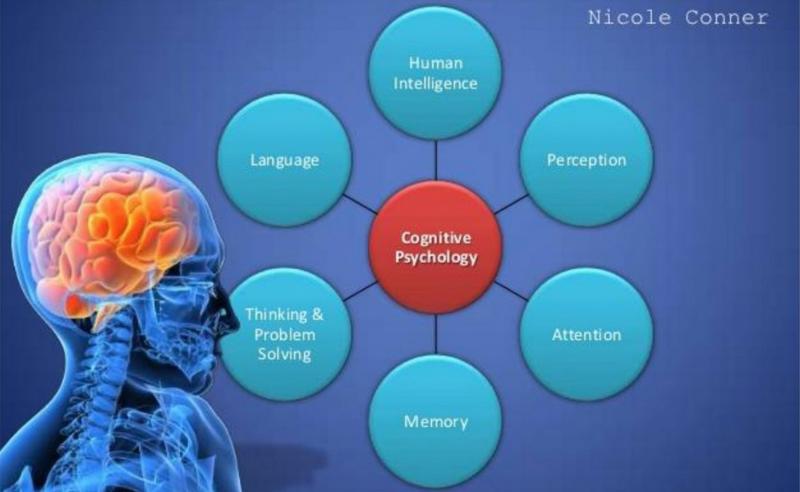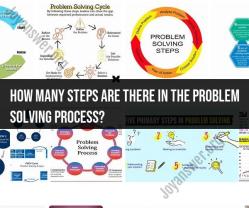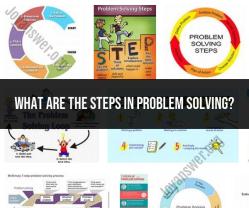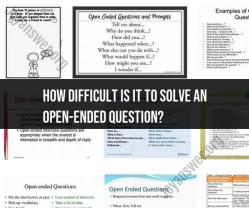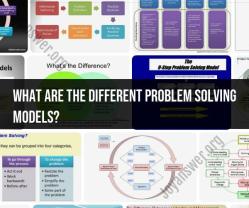What are some problems that need solving?
Identifying problems that need solving can vary based on the context and perspective, but here are some additional critical issues that are relevant in various domains:
Plastic Pollution: Finding sustainable alternatives to single-use plastics and addressing the environmental impact of plastic waste.
Biodiversity Loss: Protecting and preserving diverse ecosystems and species to maintain ecological balance and prevent the loss of biodiversity.
Access to Clean Water: Ensuring access to safe and clean drinking water for all, especially in areas affected by water scarcity and contamination.
Digital Privacy: Developing policies and technologies to protect individuals' privacy in the digital age, addressing concerns related to data collection and surveillance.
Conflict Resolution: Promoting peaceful resolutions to conflicts, both at the national and international levels, to reduce violence and human suffering.
Mass Migration: Addressing the causes and consequences of mass migration, including displaced populations due to conflict, economic hardship, and climate change.
Human Trafficking: Combating human trafficking and modern slavery through awareness, prevention, and prosecution of perpetrators.
Access to Education for Girls: Promoting equal educational opportunities for girls and women in regions where they may face barriers to education.
Corruption: Developing strategies to combat corruption in governments, businesses, and organizations to foster transparency and accountability.
Global Economic Inequality: Finding ways to reduce the gap between wealthy and impoverished nations and addressing economic disparities within countries.
Drug Abuse and Addiction: Implementing comprehensive strategies to address the social and health impacts of drug abuse and addiction.
Crisis Response and Preparedness: Improving global and local systems for responding to natural disasters, pandemics, and other emergencies.
Automation and Job Displacement: Mitigating the impact of automation on employment by developing strategies for upskilling and retraining the workforce.
Lack of Mental Health Support: Increasing awareness and access to mental health services, especially in regions where mental health is stigmatized or neglected.
Access to Healthcare: Improving healthcare infrastructure and ensuring access to quality healthcare services, particularly in underserved and remote areas.
These problems are interconnected, and addressing one often involves considering its impact on others. Solving these critical issues requires collaboration, innovation, and a commitment to positive change from individuals, communities, businesses, and governments.
1. Examples of pressing issues that require solutions:
Here are some examples of pressing issues that require solutions:
Climate change: Climate change is a global problem that is already having a significant impact on the planet. It is causing rising sea levels, more extreme weather events, and changes in plant and animal life. If we do not take action to reduce greenhouse gas emissions, the impacts of climate change will become even more severe.
Poverty: Poverty is a major global problem that affects billions of people around the world. It is a complex issue with many causes, including lack of access to education, healthcare, and jobs. Poverty can trap people in a cycle of deprivation and make it difficult for them to improve their lives.
Inequality: Inequality is another pressing issue that is affecting societies around the world. It is the gap between the rich and the poor, and it is often measured by income or wealth inequality. Inequality has a number of negative consequences, including increased social unrest and political instability.
Conflict: Conflict is a major problem that is responsible for much of the suffering in the world today. It can take the form of war, civil war, or terrorism. Conflict can cause displacement, death, and destruction, and it can have a long-lasting impact on the lives of those affected.
Disease: Disease is a major killer around the world, and it is a constant threat to human health. Infectious diseases, such as HIV/AIDS, tuberculosis, and malaria, are a major problem in many developing countries. Non-communicable diseases, such as heart disease, stroke, cancer, and diabetes, are also a major cause of death and disability worldwide.
2. Global problems that need urgent attention and resolution:
In addition to the pressing issues listed above, there are a number of other global problems that need urgent attention and resolution. These include:
Environmental degradation: Environmental degradation is the damage or destruction of the environment caused by human activities. It includes problems such as deforestation, pollution, and loss of biodiversity. Environmental degradation has a number of negative consequences, including climate change, water scarcity, and food insecurity.
Nuclear proliferation: Nuclear proliferation is the spread of nuclear weapons to additional countries. Nuclear weapons are extremely destructive, and their use could have catastrophic consequences for humanity. It is important to prevent the spread of nuclear weapons and to work towards nuclear disarmament.
Cybersecurity: Cybersecurity is the protection of computer systems and networks from attack. Cyberattacks can have a significant impact on individuals, businesses, and governments. It is important to strengthen cybersecurity measures to protect our critical infrastructure and data.
Pandemics: Pandemics are global outbreaks of infectious diseases. They can cause widespread death and disruption, and they can have a significant impact on the global economy. It is important to be prepared for pandemics and to have plans in place to respond to them.
3. How innovation and problem-solving intersect to address societal challenges:
Innovation and problem-solving are essential tools for addressing societal challenges. Innovation can lead to the development of new technologies, products, and services that can help to solve problems. Problem-solving can help to identify and implement solutions to existing problems.
There are a number of ways in which innovation and problem-solving can intersect to address societal challenges. For example:
New technologies can be used to address environmental challenges. For example, renewable energy technologies can help to reduce greenhouse gas emissions, and smart grid technologies can help to improve energy efficiency.
New products and services can be developed to address social challenges. For example, microfinance institutions can provide loans to poor people, and mobile health technologies can provide access to healthcare in underserved communities.
Problem-solving approaches can be used to develop solutions to complex problems. For example, design thinking can be used to develop innovative solutions to problems, and systems thinking can be used to understand the complex interactions between different parts of a problem.
Innovation and problem-solving are essential tools for addressing societal challenges. By working together, we can develop creative solutions to the problems facing our world.
